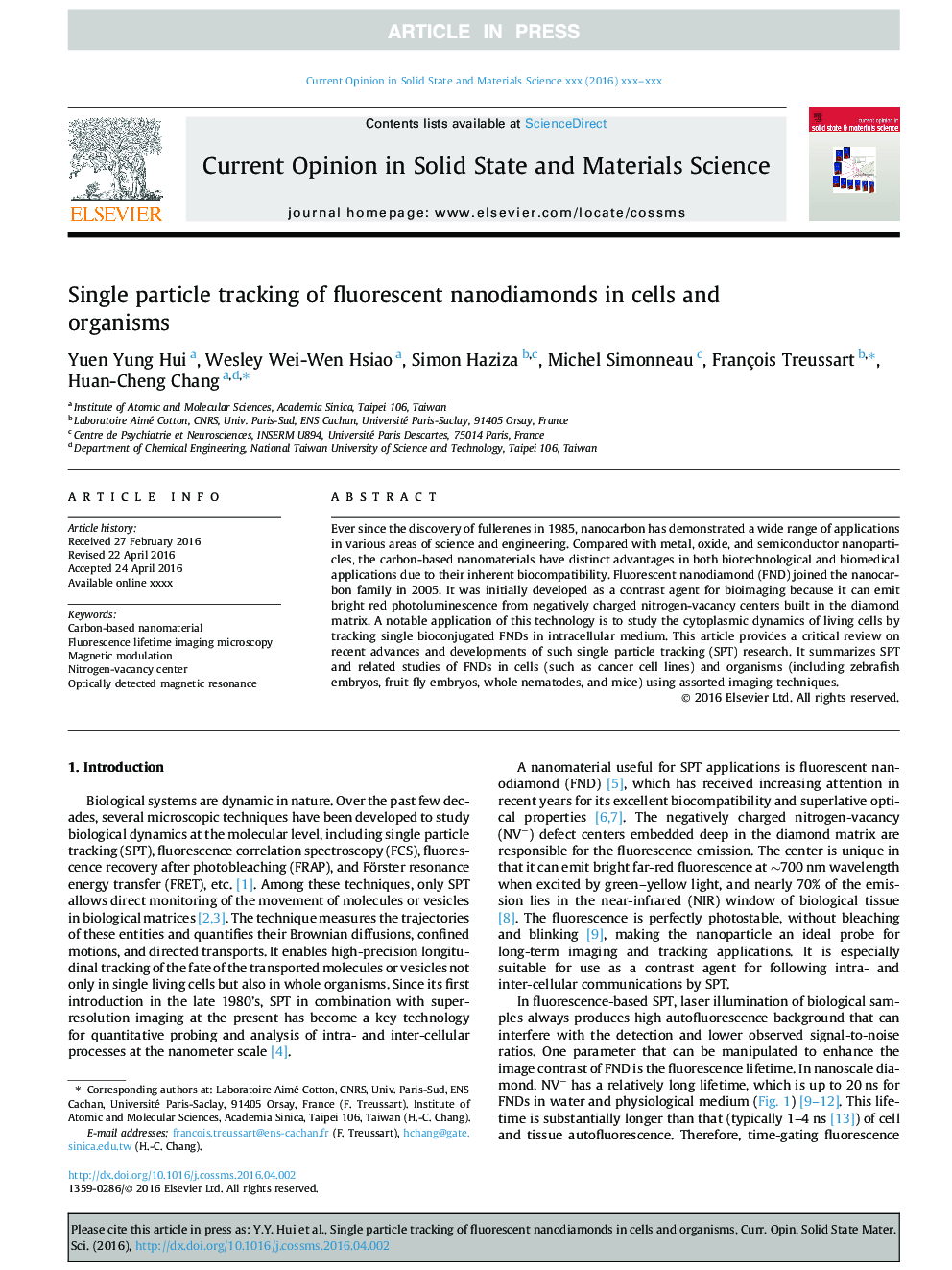| Article ID | Journal | Published Year | Pages | File Type |
|---|---|---|---|---|
| 5451489 | Current Opinion in Solid State and Materials Science | 2017 | 8 Pages |
Abstract
Ever since the discovery of fullerenes in 1985, nanocarbon has demonstrated a wide range of applications in various areas of science and engineering. Compared with metal, oxide, and semiconductor nanoparticles, the carbon-based nanomaterials have distinct advantages in both biotechnological and biomedical applications due to their inherent biocompatibility. Fluorescent nanodiamond (FND) joined the nanocarbon family in 2005. It was initially developed as a contrast agent for bioimaging because it can emit bright red photoluminescence from negatively charged nitrogen-vacancy centers built in the diamond matrix. A notable application of this technology is to study the cytoplasmic dynamics of living cells by tracking single bioconjugated FNDs in intracellular medium. This article provides a critical review on recent advances and developments of such single particle tracking (SPT) research. It summarizes SPT and related studies of FNDs in cells (such as cancer cell lines) and organisms (including zebrafish embryos, fruit fly embryos, whole nematodes, and mice) using assorted imaging techniques.
Keywords
Related Topics
Physical Sciences and Engineering
Materials Science
Materials Chemistry
Authors
Yuen Yung Hui, Wesley Wei-Wen Hsiao, Simon Haziza, Michel Simonneau, François Treussart, Huan-Cheng Chang,
